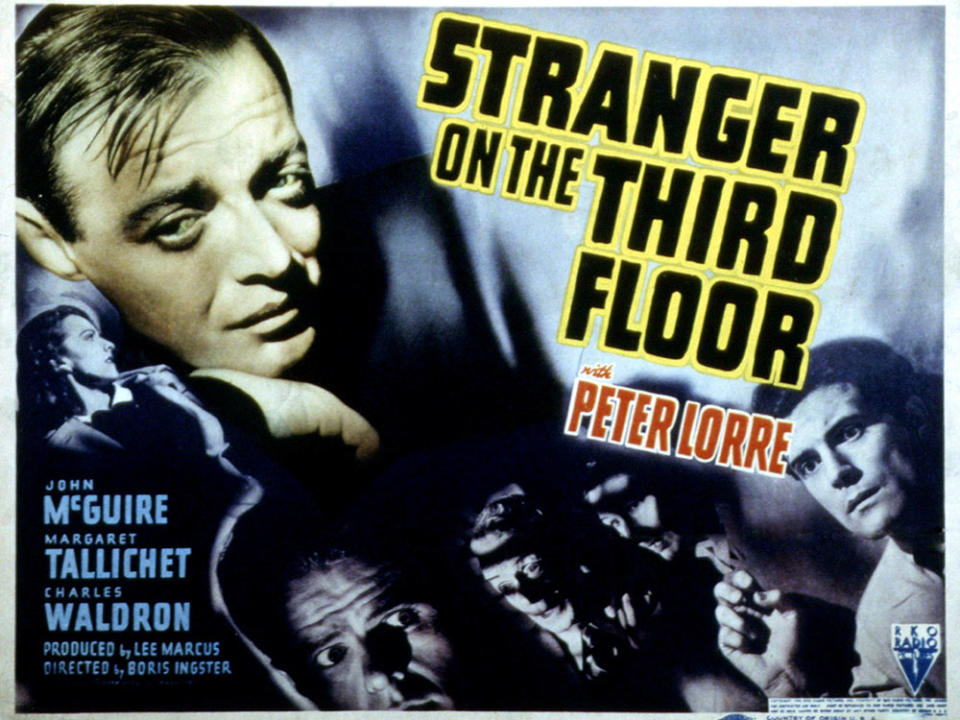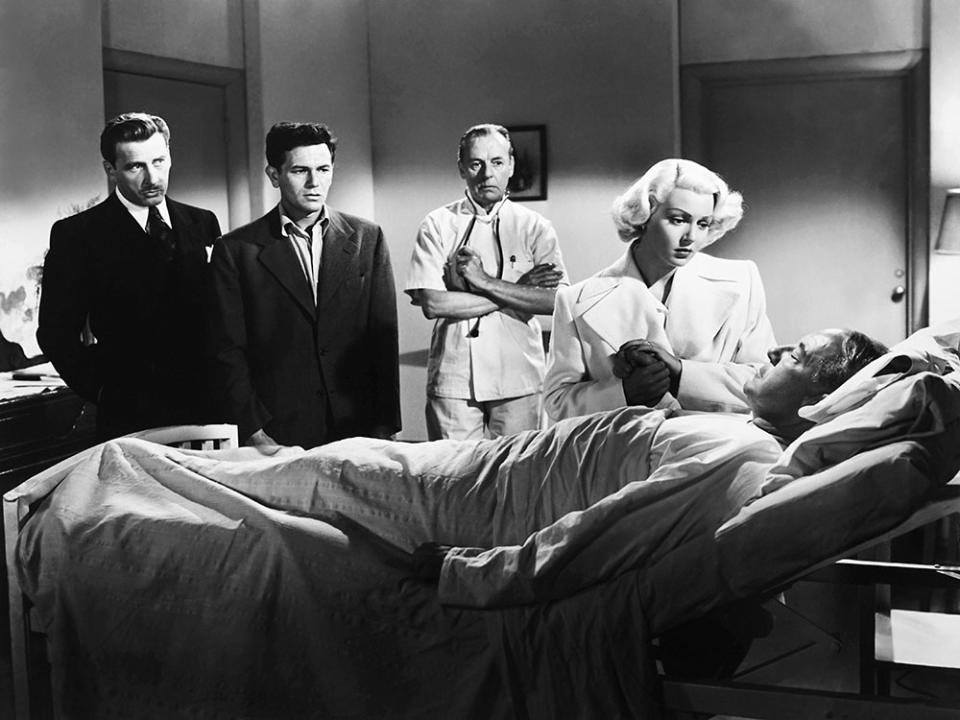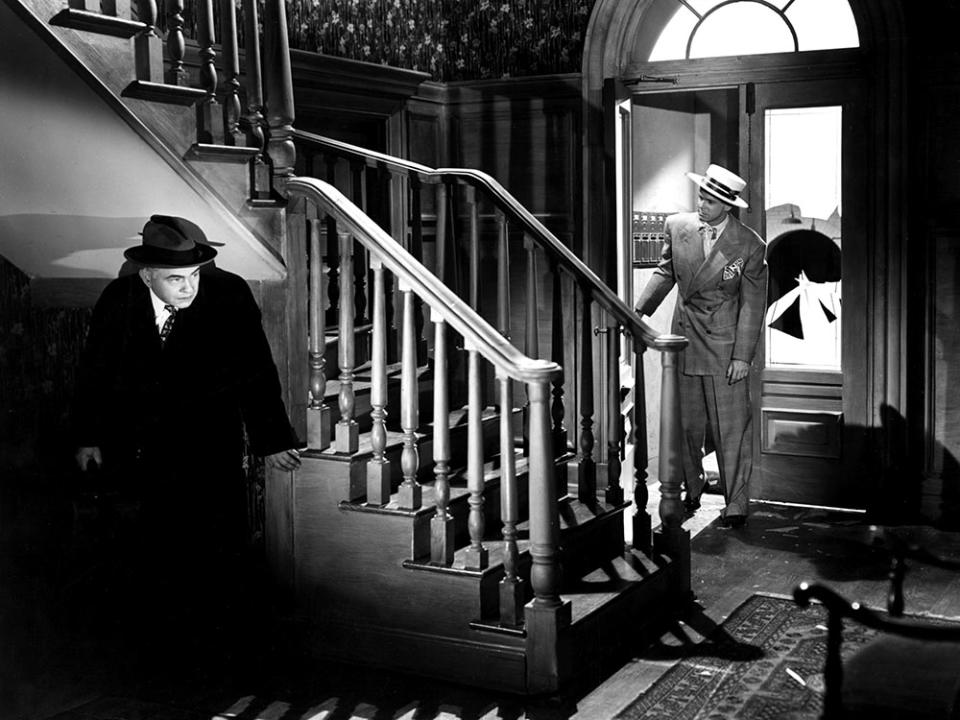Film Noir’s Early Days: How Studios Resisted, Then Embraced, the Genre
- Oops!Something went wrong.Please try again later.
- Oops!Something went wrong.Please try again later.
- Oops!Something went wrong.Please try again later.
- Oops!Something went wrong.Please try again later.

“The picture is a morbid, seamy story dealing with the dregs of humanity,” wrote Terry Ramsaye, editor of Motion Picture Herald, in 1946. The bottom feeder in question was Fritz Lang’s Scarlet Street (1945), which had somehow slipped by the Breen office to incite the wrath of straitlaced critics and municipal censors. “One of these [abominations] now and then may be accepted in the flow of entertainment offerings,” allowed Ramsaye, but “a cycle of the like would be disastrous.”
But the cycle was already spinning out of control and well on its way to becoming a full-on genre. The French had already dubbed it film noir, but at the time American critics didn’t quite know what to call it — or to make of it. They only knew that it was a new and disturbing trend in Hollywood cinema, a provocation that threatened to alienate the family audience, outrage moral guardians, and bust up a profitable racket.
More from The Hollywood Reporter
'Dune,' 'Nightmare Alley,' 'West Side Story' Receive Sound Editors' Golden Reel Awards
How Detailed Costume Design Makes the Case for Returning to the Big Screen
When MGM Ruled Hollywood: The Rise (and Fall) of Amazon's Next Prize
The menace seemed to have arrived punctually at the end of World War II, but the genealogy stretched back further in time. In 1972, the then-theorist and soon practitioner Paul Schrader spun an origin story that name-checked a multiplicity of cinematic sources at home and overseas — German Expressionism, Universal horror, French melodrama, British thrillers — before the varied lineages cross-bred into something distinctly American. (The coinage “film noir” is usually credited to the French critic and screenwriter Nino Frank, who in 1946 derived it from the “black” crime fiction of Marcel Duhamel’s Série noire publishing imprint. Raymond Borde and Etienne Chaumeton codified the term in their pioneering study A Panorama of American Film Noir, published in 1955.)
What exactly defined that “something” has long been a favorite parlor game for film noir geeks: “Is It or Isn’t It Noir?” Others have attempted to develop a rigid taxonomy of the icons, styles, and themes of the genre, as if by ticking off a sufficient number of generic signposts, a critical mass of noir-ness will clinch the case. Low lighting? Check. Flashbacks? Check. Elisha Cook Jr.? Check. The saner side of the fan base has adopted the formula Justice Potter Stewart used to define another elusive genre: I know it when I see it.
No matter how you cut it, the gene pool was predominantly German. The shadowy netherworld of German Expressionism and the cold eye of the late Weimar era bequeathed a visual style and tonal attitude: the warped mindscapes of Robert Weine’s The Cabinet of Dr. Caligari (1920), the waking nightmares conjured by F. W. Murnau’s Nosferatu (1922) and Faust (1926), and the criminal profiling in Fritz Lang’s M (1931) and The Testament of Dr. Mabuse (1933). In 1927, when Murnau defected from Ufa to Fox, much of the local talent, including John Ford and Frank Borzage, came by the lot to check out his chops — the moving camera, the lighting effects, the multiple exposures.
The other German parent, the darkest one, was Nazism. A statistically significant percentage of the great noir progenitors (Fritz Lang, Robert Siodmak, Billy Wilder, Edgar G. Ulmer, Otto Preminger) fled Nazi Germany a step ahead of the Gestapo or were smart enough to sense what lurked around the corner. They were joined by boatloads of desperate refugees who didn’t need to master the English language to find a means of expression in a visual medium: set designers, lighting technicians, cameramen and musicians. California was paradise, but existence was precarious, always a visa stamp away from perdition. No wonder the films listing their bylines vibrate with a coiled tension and pervasive fear, the sense that it will all go wrong, that no matter how meticulous the murder plot or heist scheme, fate will trip you up.

Courtesy Everett Collection
By osmosis and plagiarism, the sensibility and styles bled onto adjacent soundstages and nurtured a kind of paranoid style in American cinema. Boris Ingster’s Stranger on the Third Floor (1940) — which, by the way, has low lighting, flashbacks and Elisha Cook Jr. — is often cited as the first true noir exemplar. “The fancy camera effects, lighting, and trick dubbing,” cost far more than was necessary for a “desultory ‘B,’” scoffed Variety. “Too arty for average audiences.” [i] The next year saw a trio of influential proto or partial noirs (or authentic noirs, whatever): John Huston’s The Maltese Falcon (1941), I Wake Up Screaming (1941, originally released under the un-noirish title Hot Spot) and, despite being Elisha Cook Jr.-less, Orson Welles’ Citizen Kane (1941).
It was during, not after, World War II that film noir first set down firm roots. In Blackout: World War II and the Origins of Film Noir, film scholar Sheri Chinen Biesen locates the emergence of the genre in the “bleak realities of a world at war,” a cinematic projection of the daily terrors of a generation dreading a telegram from the War Department or a bullet from the Wehrmacht, that knew what it was like to live on borrowed time. Amid the patriotic uplift and upbeat escapism purveyed by wartime Hollywood, the films only seemed like outliers. No less than Mrs. Miniver (1942) or Meet Me in St. Louis (1944), they were pure products of their historical moment, among them Frank Tuttle’s This Gun for Hire (1942), Lang’s Ministry of Fear (1943), Preminger’s Laura (1944), and, of course, the landmark that brooks no argument about its ür-noir-ness, Billy Wilder’s Double Indemnity (1944).
Then, le déluge. By 1946, you’d have to be blind not to know that a major strain of American cinema looked darker and grimmer, more off-kilter and unbalanced, that the secure grounding of Hollywood’s moral universe was being upended and undercut. The surest way to tell something troubling was in the air was the thesaurus’ worth of pejoratives unleashed by appalled critics: seamy, sordid, morbid, lurid, sadistic, vulgar and the all-purpose “fundamentally unpleasant.” Christine Smith, the prim censor for the city of Atlanta, decried the postwar wave of “pictures centered around undesirable characters engaged in brutal and sordid undertakings.”[ii] Since the film noir tag had not yet crossed the Atlantic, the opposition struggled for suitable terms of opprobrium to name the blight: “murder mellers,” “celluloid dirt” and, best of all, “films of masculine brutality.”
The Roman Catholic Legion of Decency, the most feared pressure group turning the screws on classical Hollywood cinema, was also on high alert. The group tracked an uptick of 100 percent in objectionable (by their lights) motion picture content in the postwar period and blamed the surge on the backfire from World War II. “Audiences had become used to pictures of great physical violence and in the search for material to be substituted for war themes, Hollywood turned from physical violence to violence of the human spirit,” explained William H. Mooring, the Legion’s head film critic, in 1946. “Thus, we have gotten pictures that are immoral, unmoral, and culturally violent.” Mooring well understood how deeply the noir vision challenged the Catholic catechism upheld by the Hollywood Production Code. “Objections to pictures now are of a much graver nature than formerly,” he said. “It’s not the routine of bare legs and low-cut gowns, but offenses against basic morality.”[iii]

Courtesy Everett Collection
Joseph I. Breen, tasked with enforcing the Code’s golden rules, had a hell of a time with the noirs; the whole atmosphere was so corrosive that the end reel wrap-up fooled no one, certainly not Breen, who seemed to understand the genre was irredeemable. It took over 10 years of laundering before his office greenlit James M. Cain’s novel of adultery and murder, The Postman Always Rings Twice (1946), but the mark of Cain remained on every frame. “Strictly for adults, with an appeal chiefly to those who can stand sordidness dished up by the carload,” was the verdict from trade reviewer Peter Harrison. [iv]
Resistance to film noir was not limited to film critics and censors, however. The florid chiaroscuro and extravagant lighting schemes — the very elements savored by today’s noir aficionados — were disparaged by old-line members of the American Society of Cinematographers as “arty camera effects” at odds with Hollywood’s “invisible style.” All the swirling cigarette smoke, mirrored reflections, cantered angles, blinding fluorescent lights, and Stygian blackness — how was a moviegoer supposed to dive into a story with such distractions? “It isn’t necessary to complicate your style with trick lighting effects or odd, surrealistic angles,” cinematographer Russell Metty lectured his colleagues in 1947. “Perhaps these tricks will appeal to a few artistic highbrows, but they are way above the head of the average moviegoer.”[v]
More seriously, a chorus of voices began tarring film noir with the most dreaded of all postwar epithets: subversive. “We cannot send pictures overseas which show Americans as sordid people intent upon low objectives and willing to go to any lengths of violence to achieve them,” declared an unnamed studio head, who sounded an awful lot like Louis B. Mayer, in 1946.[vi] Tellingly, in 1947, another vintage year for cold-blooded noir (Crossfire, Out of the Past, Nightmare Alley, Body and Soul, They Won’t Believe Me, Born to Kill, etc., etc.), the House Committee on Un-American Activities launched its first round of investigations into alleged communist subversion in Hollywood. Noir and its practitioners were very much in the crosshairs.
In a sense, though not in the sense the investigators thought, HUAC may have been onto something. Film noir was deeply un-American in what it said about freedom, individualism, capitalism, the nature of man (not to say woman), all the verities taught about the land of opportunity since 1776. The limitless possibilities of a beckoning frontier became an asphalt jungle of blind alleys and dead ends, where individual agency and free will counted for nothing. The fatalistic vision found apt expression in the genre’s recurrent narrative device, the flashback: the die has already been cast, your fate is already sealed, everything has already happened and nothing you can do can change what comes at you from out of the past. “It’s straight down the line for both of us, remember?” Phyllis Dietrichson tells Walter Neff in Double Indemnity, reminding him that neither one of them can get off the trolley car they’ve set in motion.

Courtesy Everett Collection
“Scarlet Street is not Main Street,” Terry Ramsaye had warned Hollywood, but Main Street made Scarlet Street — and Double Indemnity, The Killers (1946), Gilda (1946) and The Postman Always Rings Twice — major box office hits. [vii] Yes, the noirs played better in the big cities than in the small towns, and better with men than with women, but the genre tapped into a powerful undercurrent of popular resistance to the official story. Maybe it wasn’t so un-American after all.
Seventy-five-odd years later, the motion pictures that made up the high renaissance of film noir may have more outlets and play dates now than they did then — in repertory markets, Blu-ray box sets and noir-centric film festivals and television programming. Eddie Muller, TCM’s sharp-dressed noir man and the most reliable tipster on the genre’s inside dope, calls film noir “the gateway drug to classical Hollywood cinema.” Get the Gen Z-ers hooked on the monochromatic scale and femmes fatales and soon they’ll be moving on to the harder stuff — maybe even silent cinema.
The bait is as seductive as ever. So many of the prestige musicals, biopics and social-problems films of the era have flatlined and faded over time, but the tough, hard-bitten noirs never seem to lose their edge. They still have the power to grab you by the collar, slap you around and kick you in the gut.
[i] “Stranger on the 3rd Floor,” Variety, September 4, 1940: 18.
[ii] Christine Smith, “Sees Sordid Picture Warning Timely,” Motion Picture Herald, February 16, 1946: 32.
[iii] “Legion of Decency in New Steps to Force `Cleanup’ of H’wood Pix,” Variety, April 3, 1946: 1, 26.
[iv] Peter Harrison, “The Postman Always Rings Twice,” Harrison’s Reports, March 16, 1946: 42.
[v] Herb A. Lightman, “Triumph in Low Key,” American Cinematographer, May 1947: 167-168, 182.
[vi] “Anonymous But Important,” Motion Picture Herald, May 18, 1946: 18.
[vii] Terry Ramsaye, “Censorship, Again,” “Motion Picture Herald,” February 2, 1946: 8.
Best of The Hollywood Reporter

